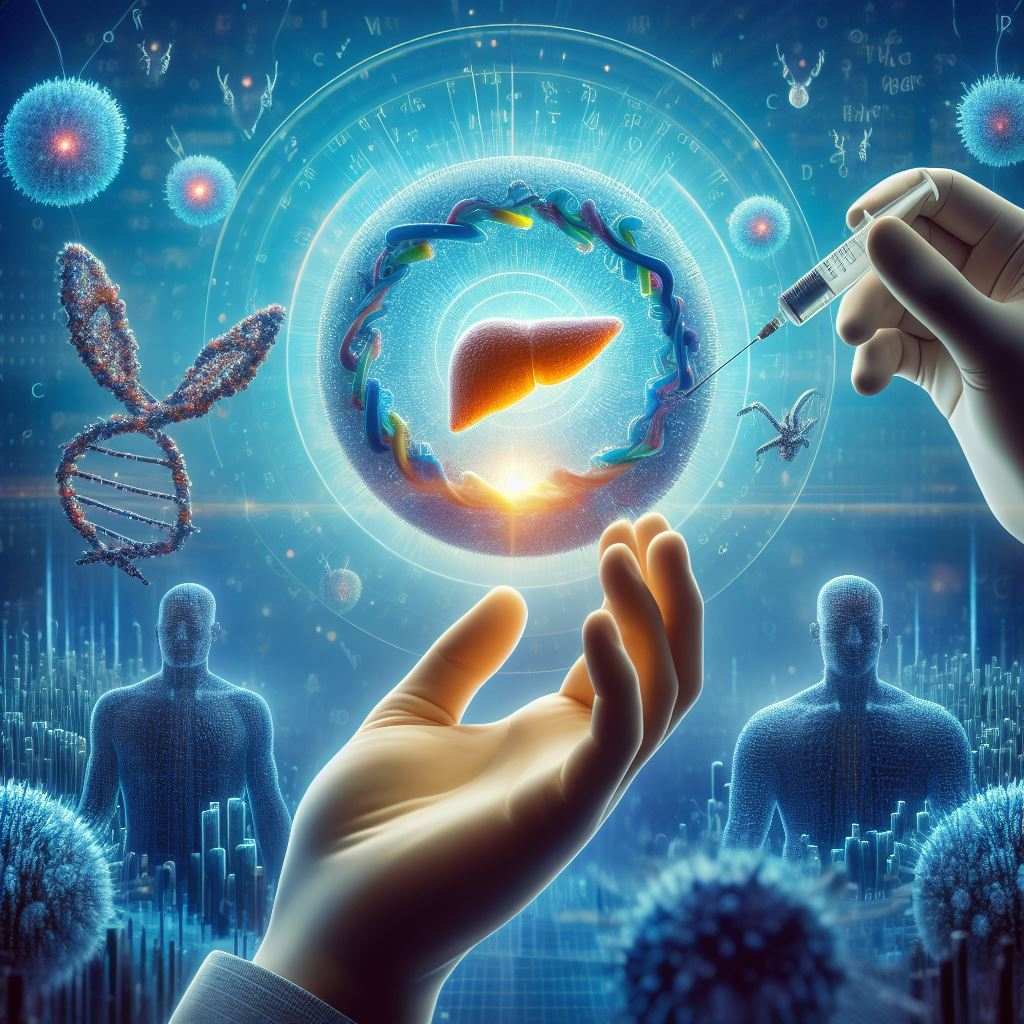In the realm of medical breakthroughs, the discovery of CRISPR-Cas has been one of the ground-breaking tools in the treatment of many viral diseases, including hepatitis C.
In the realm of medical breakthroughs, the discovery of CRISPR-Cas has been one of the ground-breaking tools in the treatment of many viral diseases, including hepatitis C. With its precision and targeted approach, it is revolutionizing the treatment of many viral diseases, including those without vaccines and those with no cure, offering hope to millions of people affected worldwide.
Clustered Regularly Interspaced Short Palindromic Repeats (CRISPR) and CRISPR-associated (Cas) genes are an RNA-guided defense mechanism of bacteria and archaea against viruses and foreign DNA. The CRISPR-Cas System is divided into two main classes, which are further divided into six types (Class I–VI) and 33 sub-types.
It consists of two key components: the Cas enzyme, which performs the endonuclease activity, and the guide RNA (gRNA), which directs the enzyme to the target site. Scientists have exploited this mechanism to combat eukaryotic viruses, especially human viruses, including many RNA viruses like Ebola, HIV, dengue, influenza, etc.
Hepatitis C, which is a positive-sense, single-stranded RNA virus of the Flaviviridae family, is an infection of the liver and causes liver cirrhosis. If left untreated, it can cause hepatocellular carcinoma (HCC).
According to the World Health Organisation`s report, currently 71 million people are estimated to be suffering from chronic hepatitis C globally, and its prevalence in Pakistan is possibly the second highest in the world (after Egypt), with around 10 million people (approximately 5% of the population) affected.
Scientists have identified seven distinct HCV genotypes along with 67 subtypes. It is encouraging that over 90% of those infected with the hepatitis C virus can be cured. However, the creation of a vaccine against hepatitis C has proven difficult.
This challenge arises from the virus’s diverse genotypes and subtypes, coupled with its rapid mutation rate, enabling it to outmanoeuvre the immune system’s defences. This viral complexity is a concern, particularly in countries like Pakistan, where one in every 20 individuals is already infected. Alarmingly, the mortality rate attributable to HCV reaches 366,000 annually.
The high rates of HCV infection in Pakistan stem from numerous factors, including unsafe medical equipment handling by healthcare providers, unnecessary injections in clinical settings, and poor hygiene standards in barber shops related to instrument sterilisation.
Moreover, needle sharing among drug users and unsafe blood transfusion practices further exacerbate the issue. Additionally, a lack of awareness among the general population regarding viral transmission contributes significantly to the spread of disease.
These challenges intensify within internally displaced persons (IDP) camps, a consequence of mass movement initiatives in Pakistan, which inadvertently become hotspots for virus transmission. Within these camps, the transmission routes involve barbers, blood transfusions, and intravenous drug use, with emerging factors like ear and nose piercings also contributing to virus transmission.
The application of the class 2 type VI CRISPR-Cas13a system serves as a robust strategy against the hepatitis C virus (HCV) by targeting its internal ribosome entry site (IRES) within eukaryotic systems.
Research supports the 70%–84% efficacy of Cas13a in specifically targeting HCV in cellular environments. Various potential Cas13a target sites within highly conserved sections of the HCV-IRES have been identified, indicating the feasibility of developing broad-spectrum therapies for this site.
This approach holds promise as an alternative antiviral method, particularly given the challenges posed by the virus’s genetic variability and its resistance to direct-acting antivirals.
Another study that made use of CRISPR-Cas9, a class 2 type II CRISPR-Cas effector, focused on creating a therapeutic plan to use genome editing technology to prevent the recurrence of the hepatitis C virus (HCV). In order to confer resistance to HCV, this study attempted to insert an expression cassette encoding an RNA aptamer targeting HCV NS5B replicase into a secure genomic region within a hepatocellular carcinoma cell line.
The findings showed that the RNA aptamer was persistently expressed, which successfully prevented HCV replication at the RNA and protein levels. This study demonstrates how genome editing technologies may expand the range of available treatments for HCV-induced liver disorders.
In conclusion, CRISPR-Cas offers transformative potential as a precise tool for treating complex viral infections like hepatitis C by enabling targeted cutting of viral genetic material to inhibit replication.
Yet there are ethical concerns regarding inadvertent cell damage from off-target effects that warrant judicious consideration. Manoeuvring precise edits within the complexity of living systems also poses engineering challenges.
Additionally, there are societal debates regarding non-medical applications that necessitate stringent regulation and transparent research to uphold public trust. Ultimately, realising the promise of CRISPR-based therapies requires a multipronged strategy, combining therapeutic editing advances with awareness campaigns and healthcare system reforms.
Sustained commitment and coordinated effort across scientific, governmental, and societal spheres are vital to judiciously translate these powerful technologies into real-world clinical benefit against viral foes like hepatitis C.
